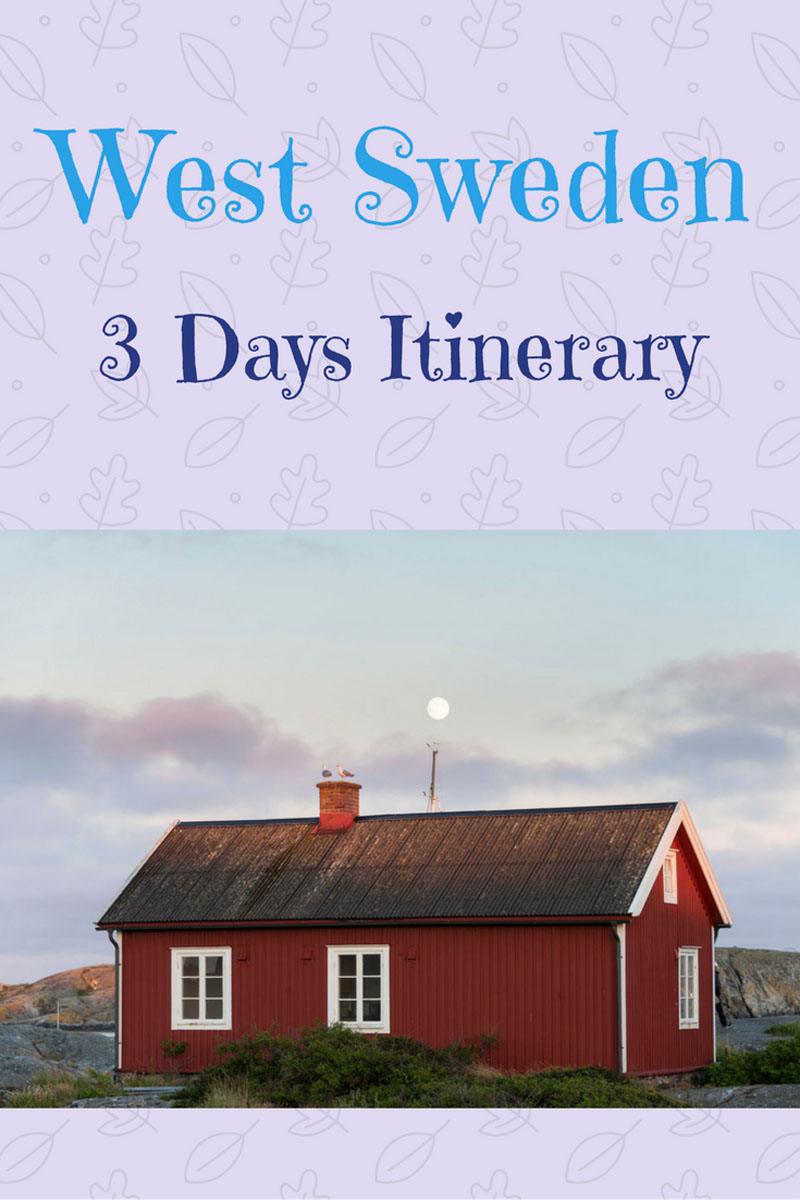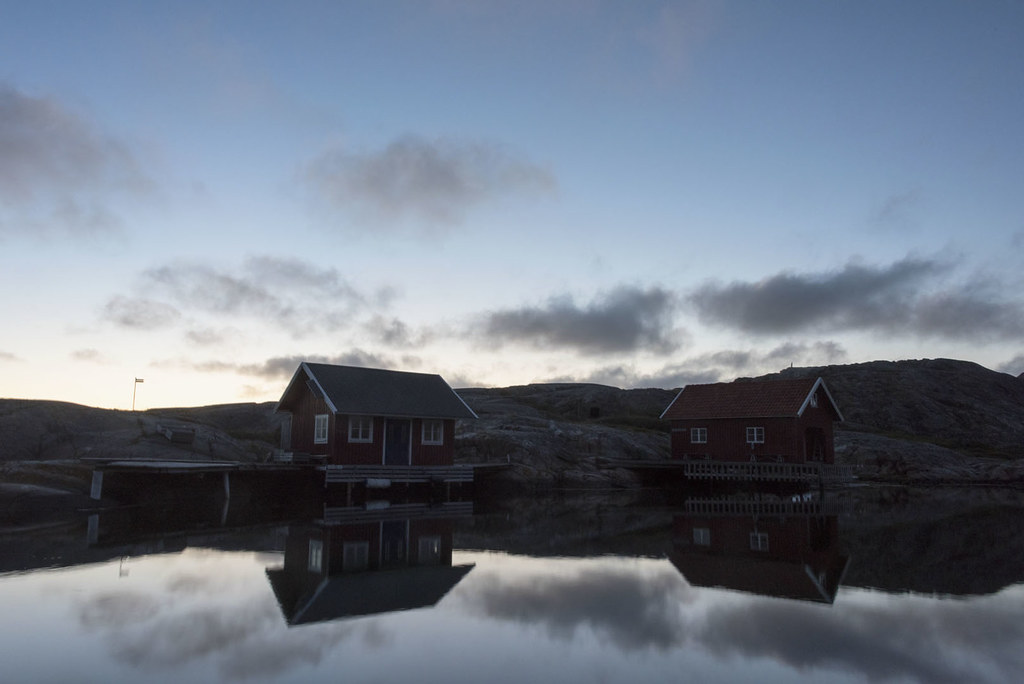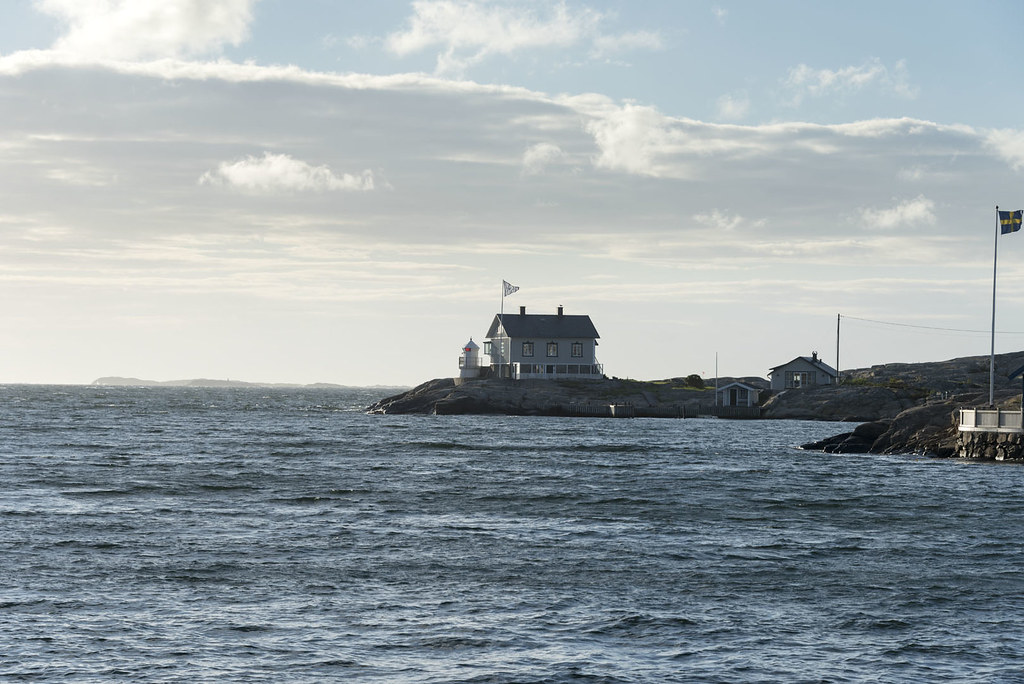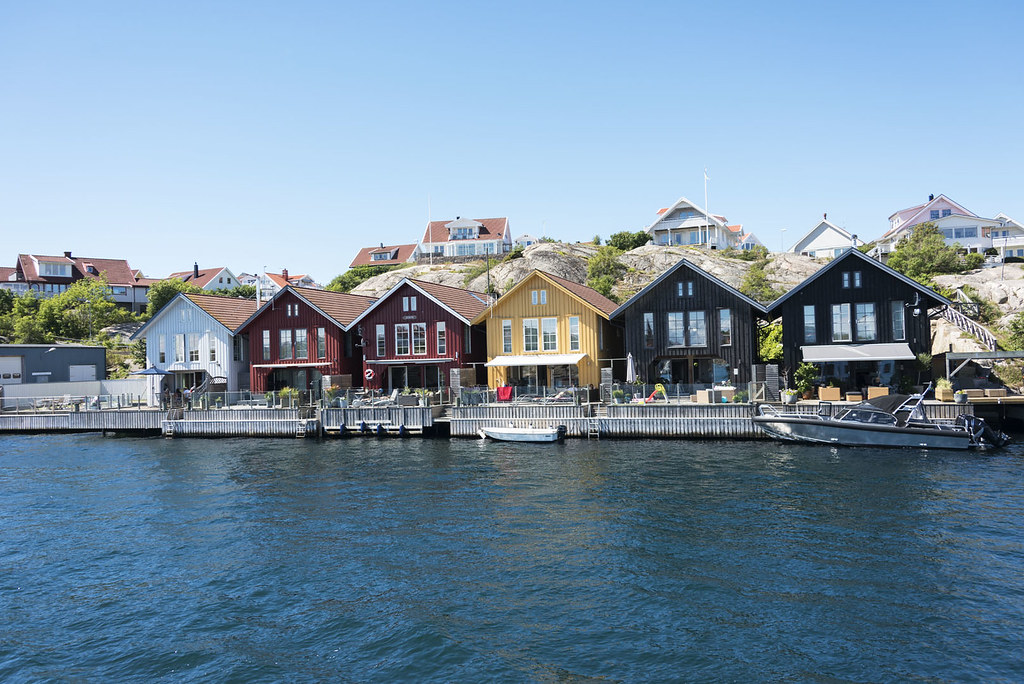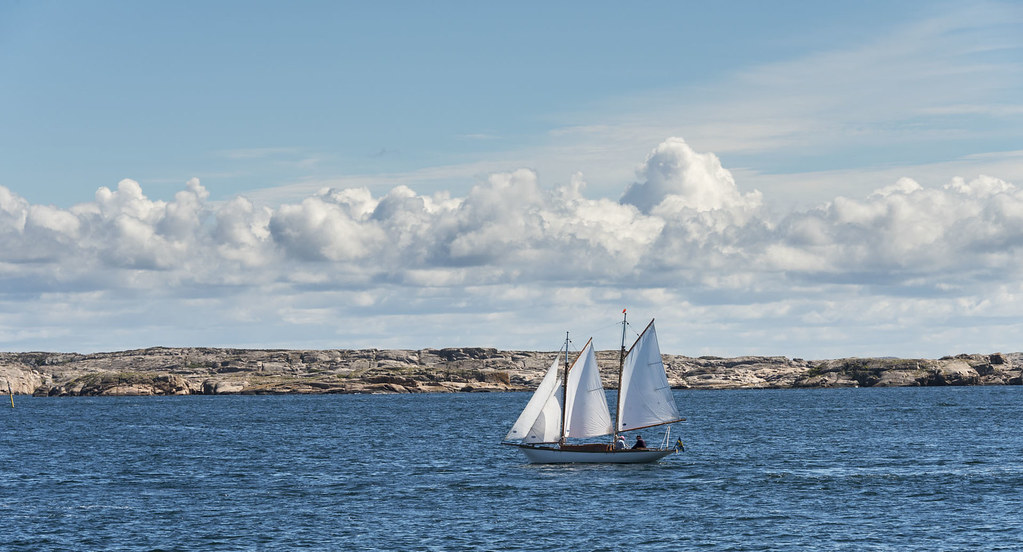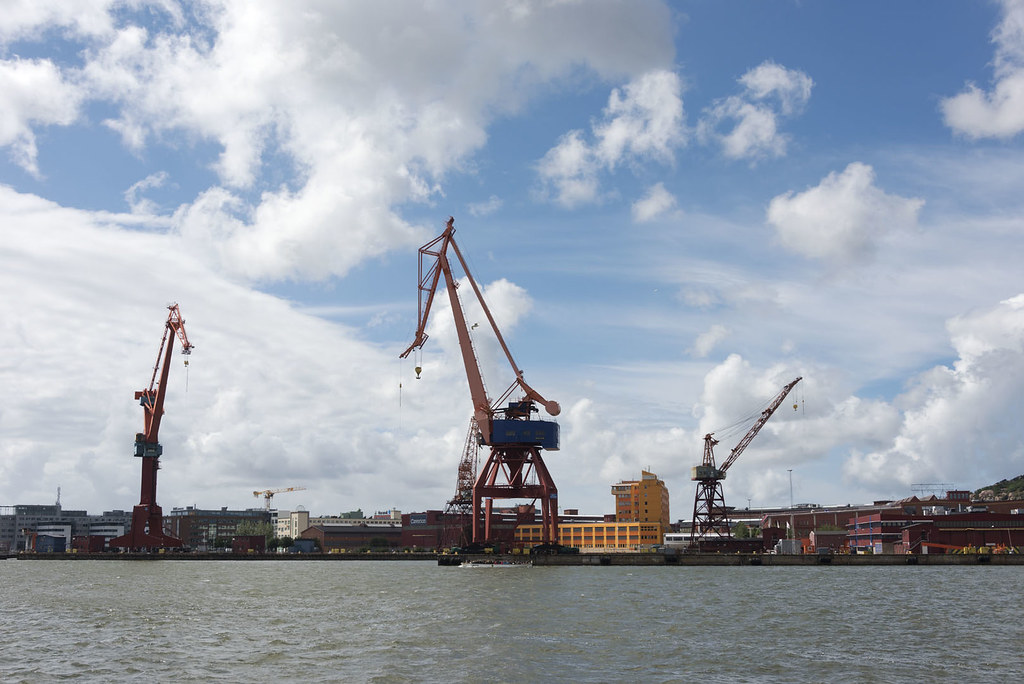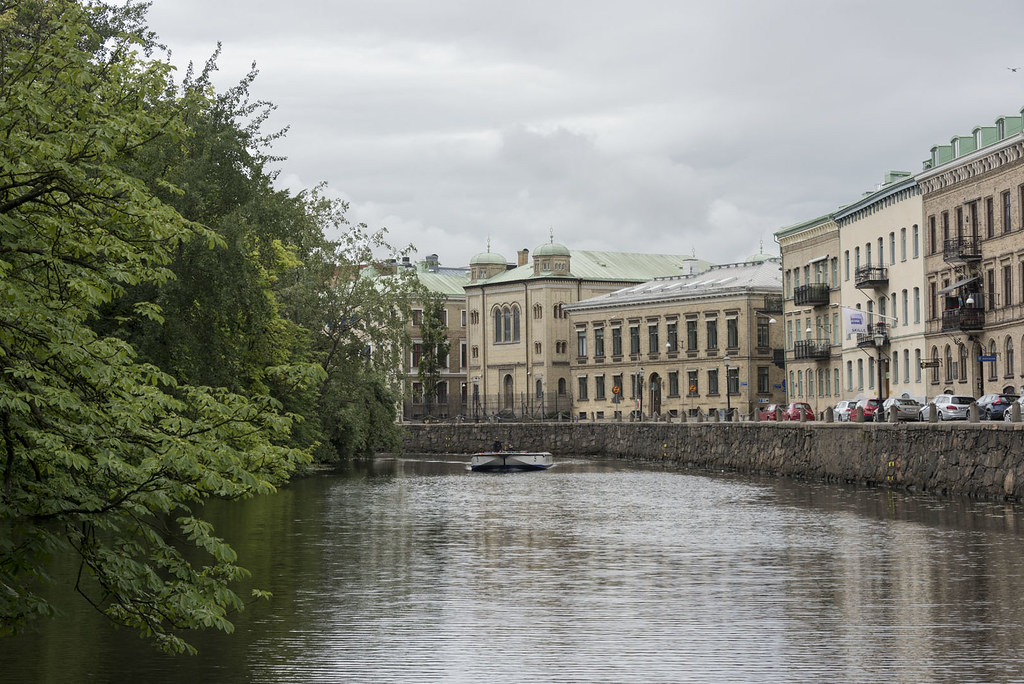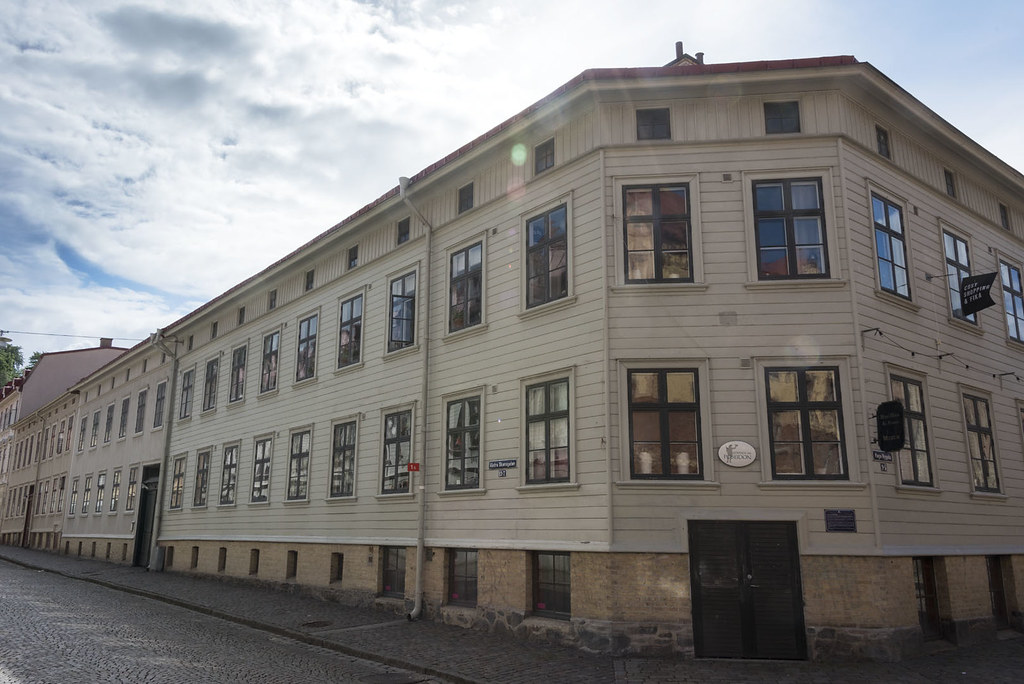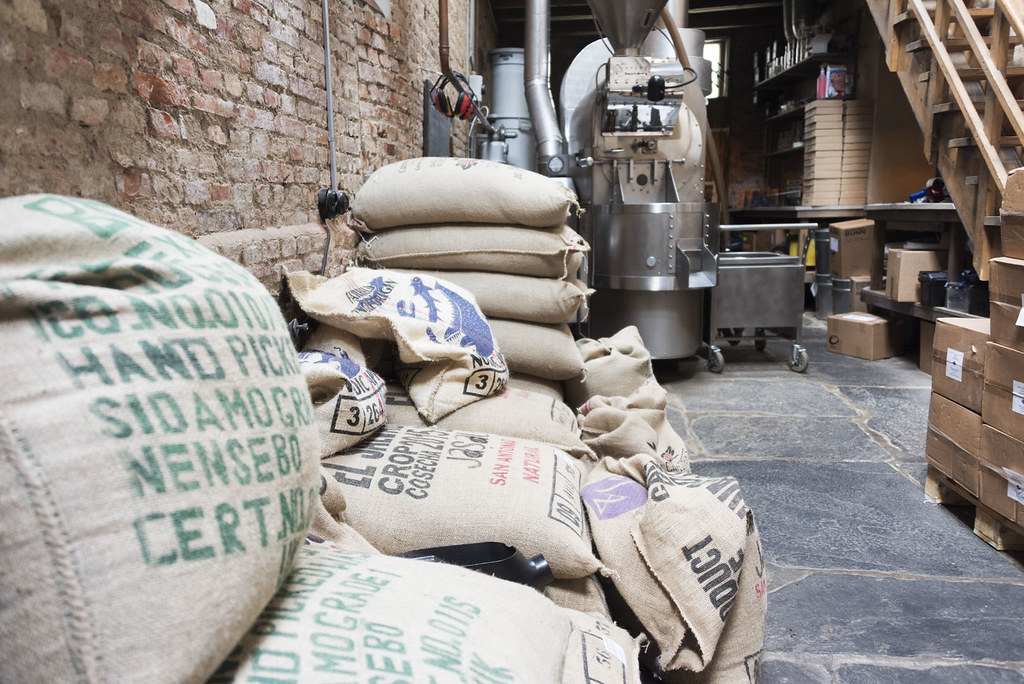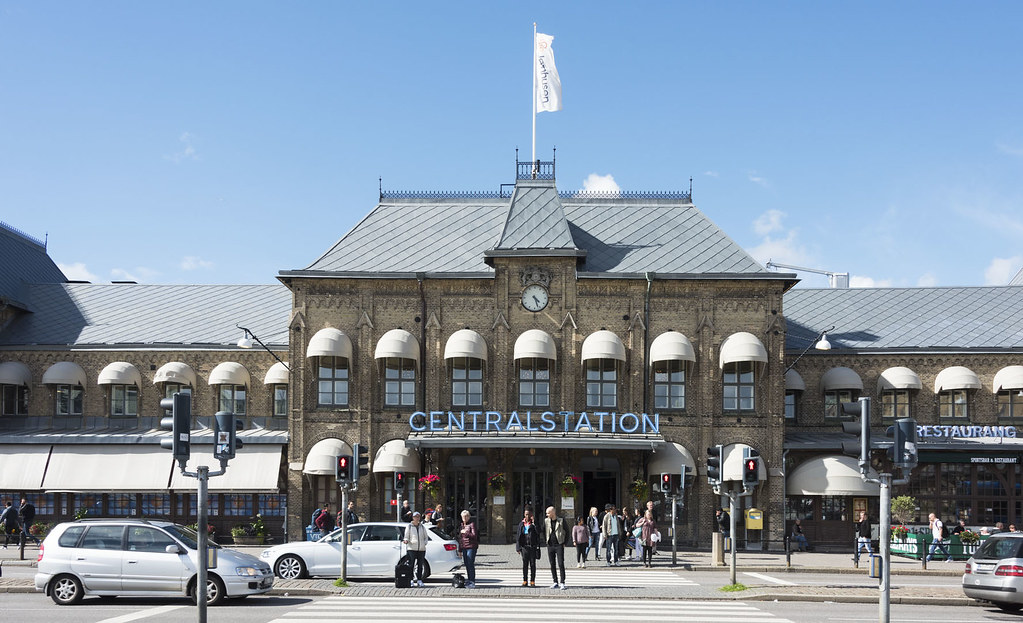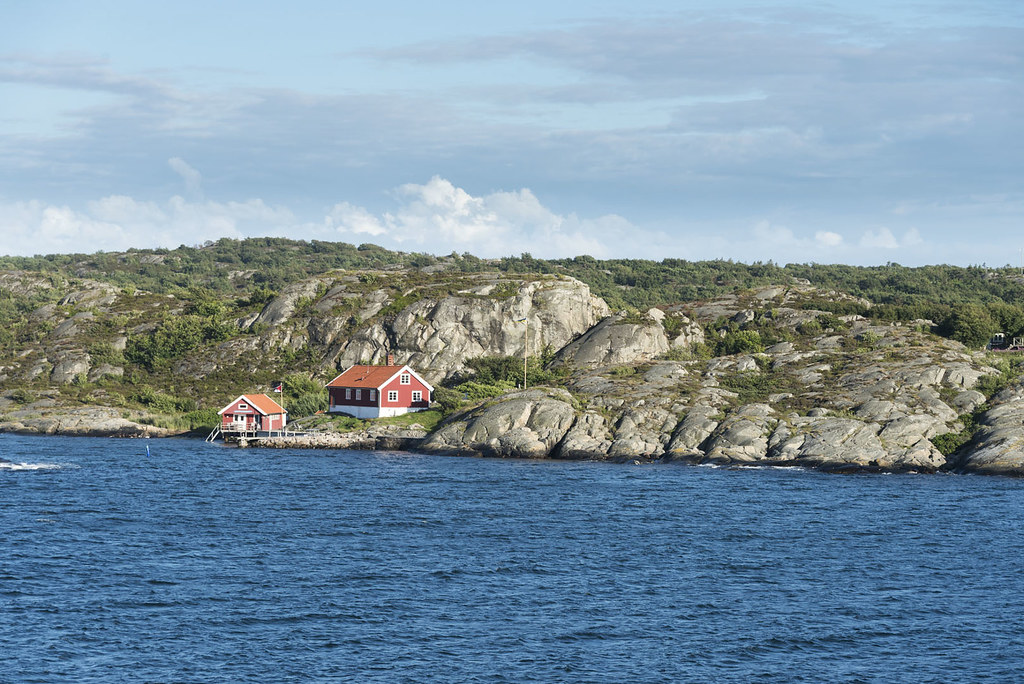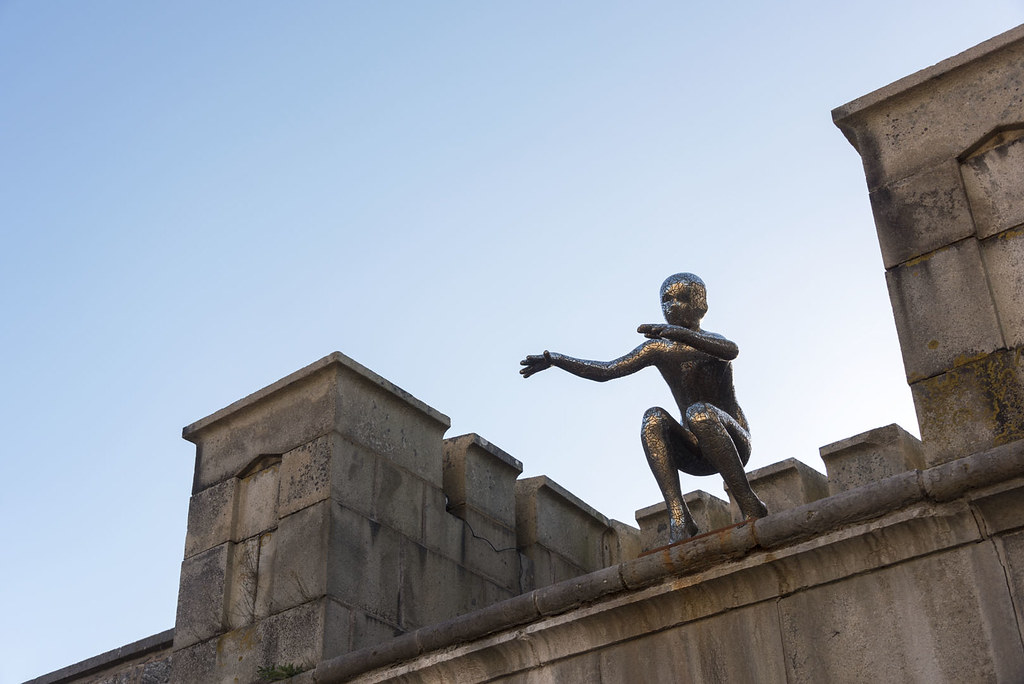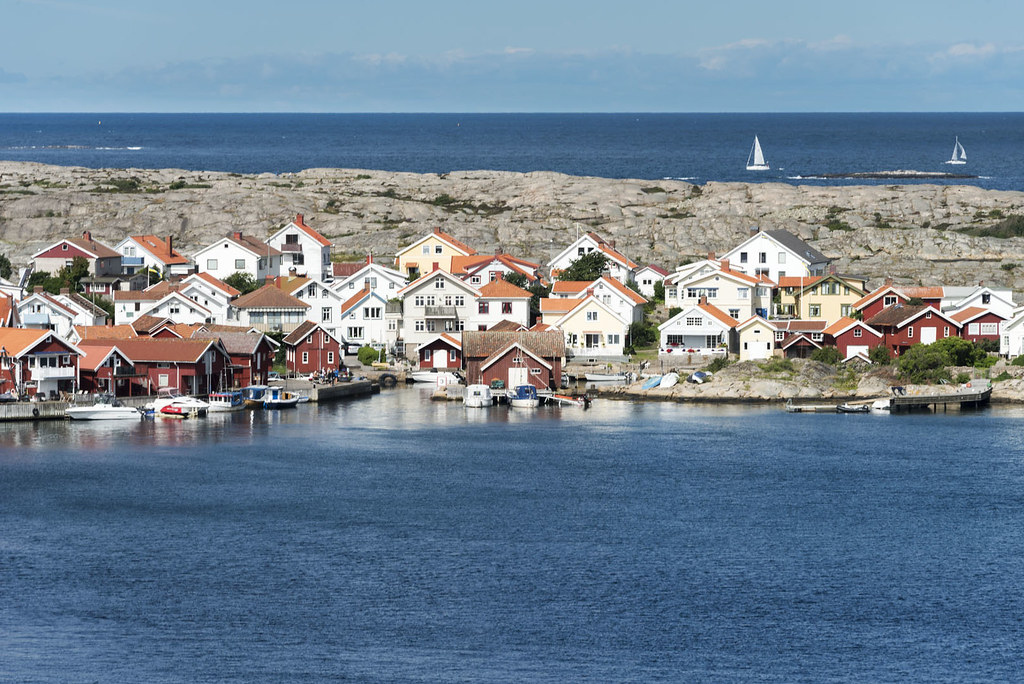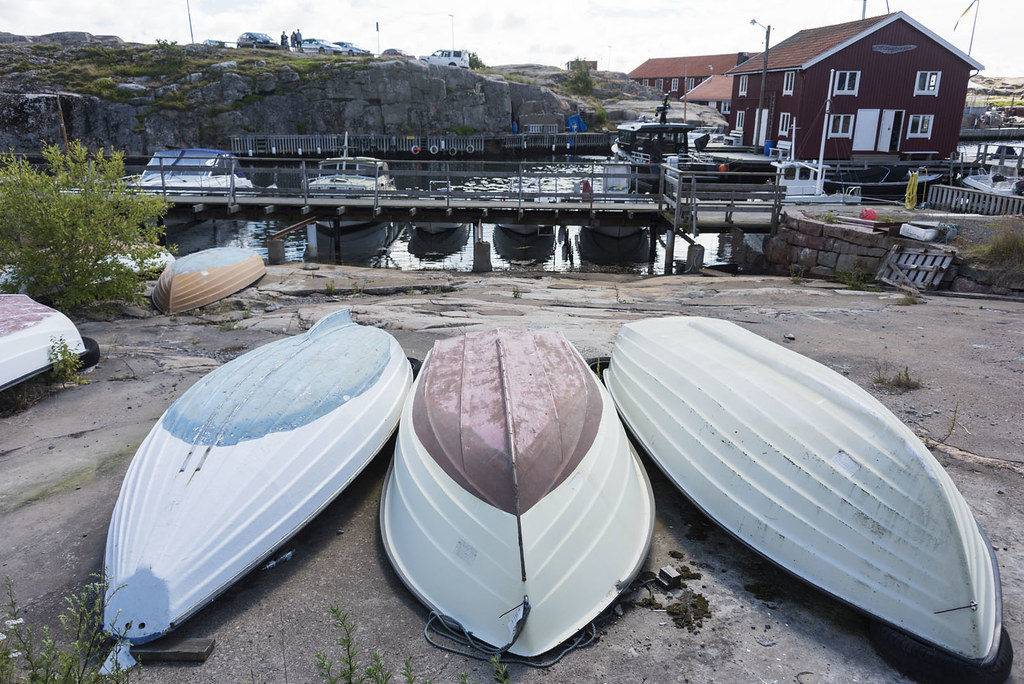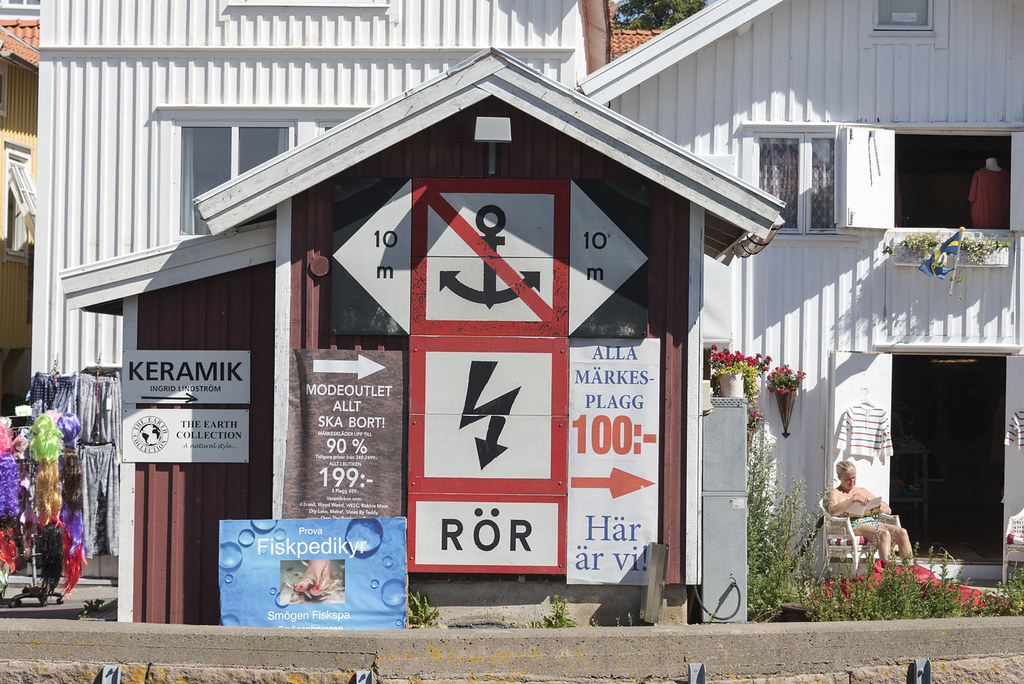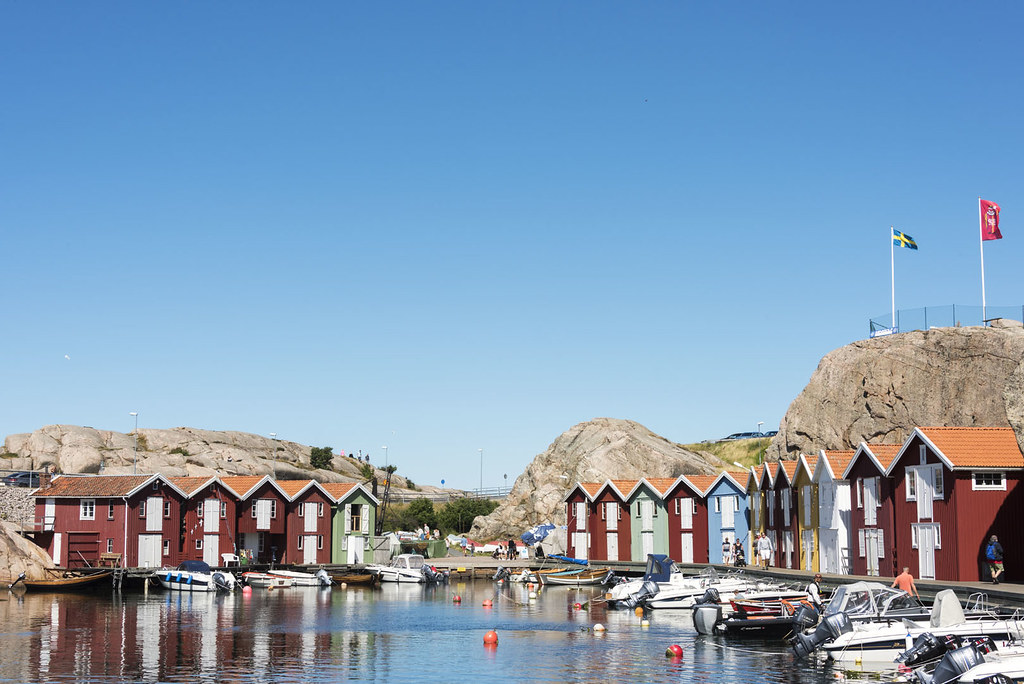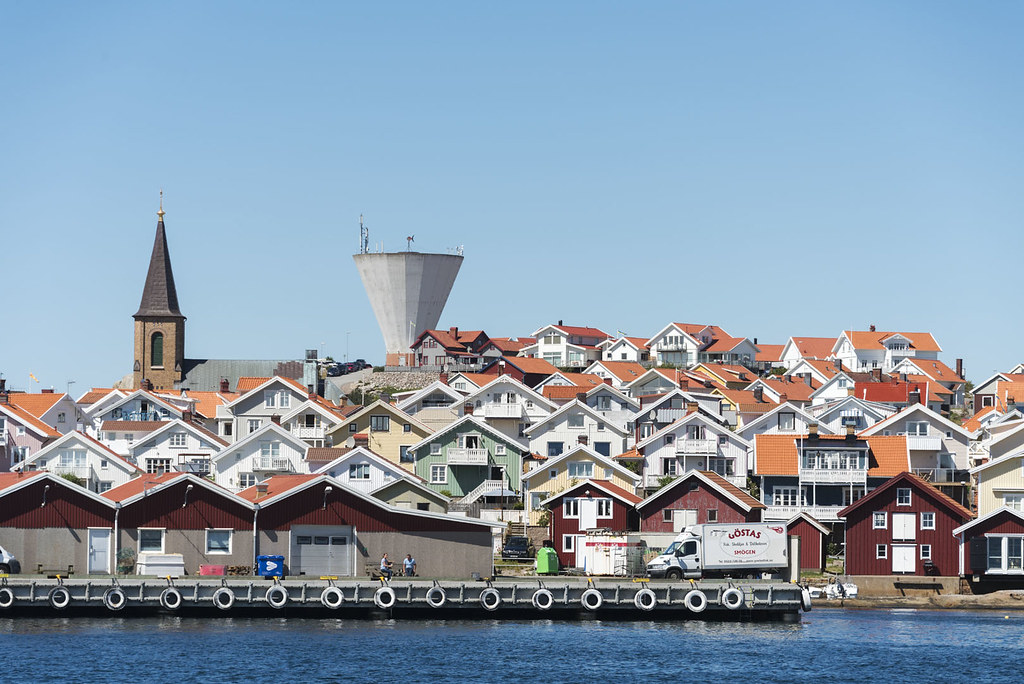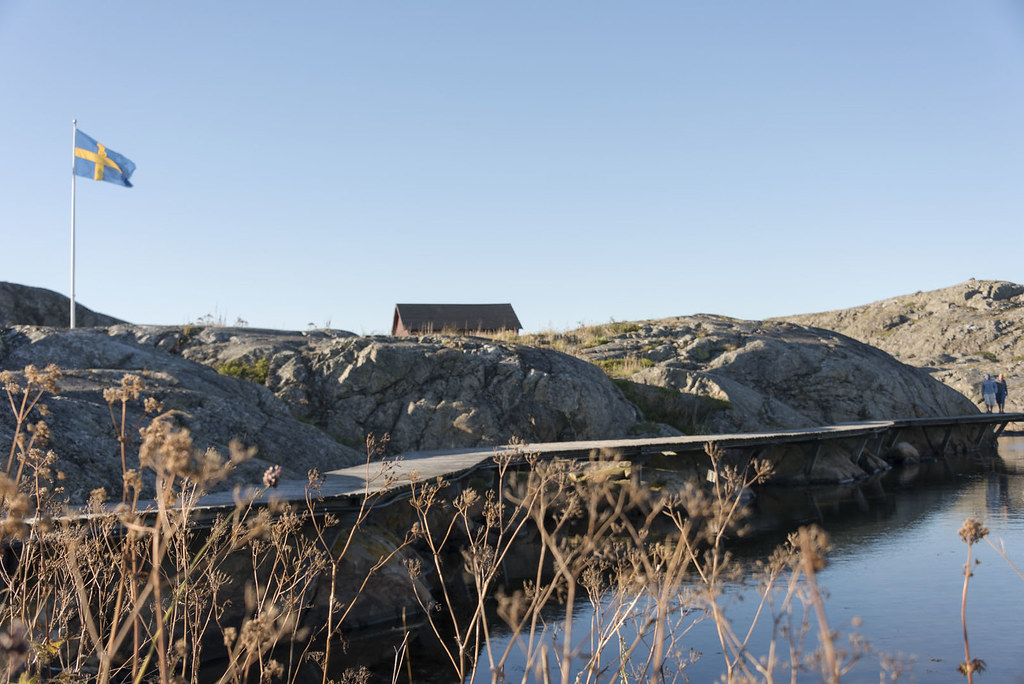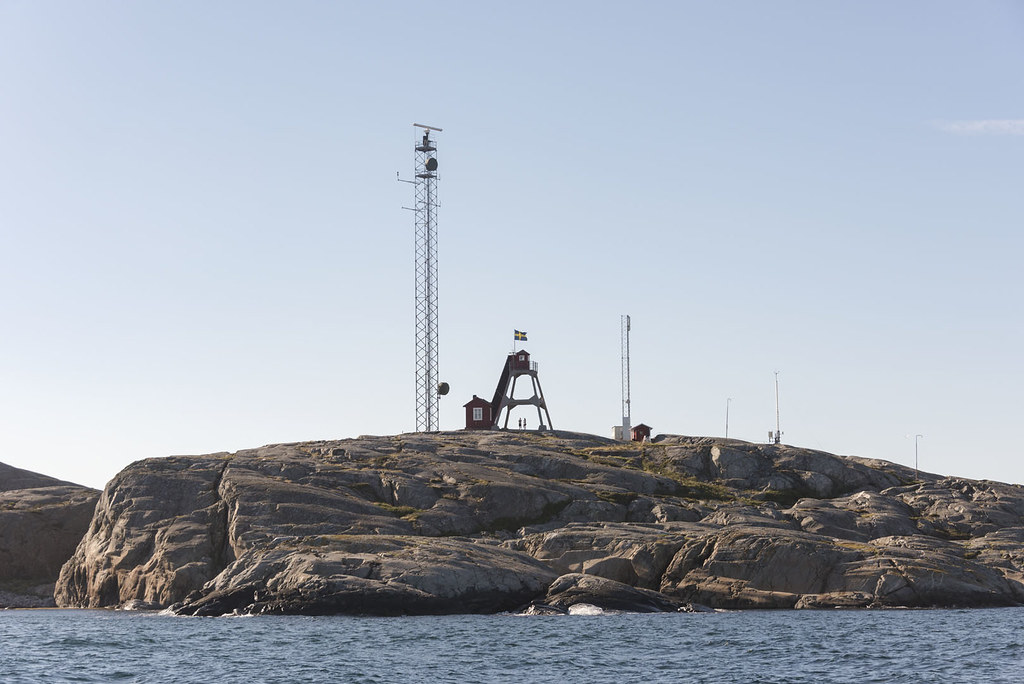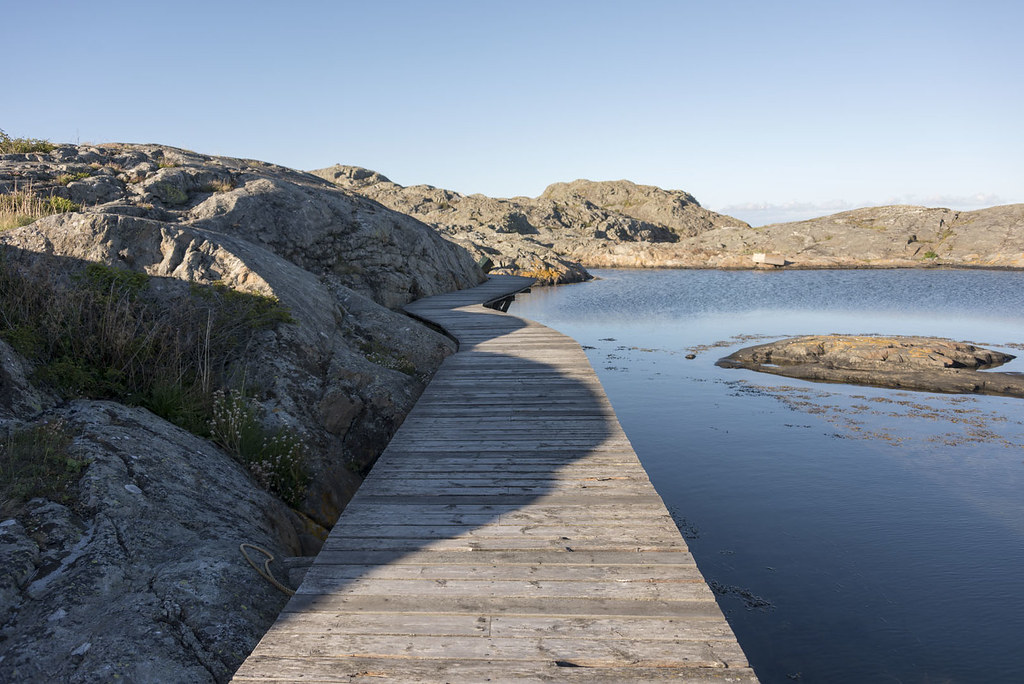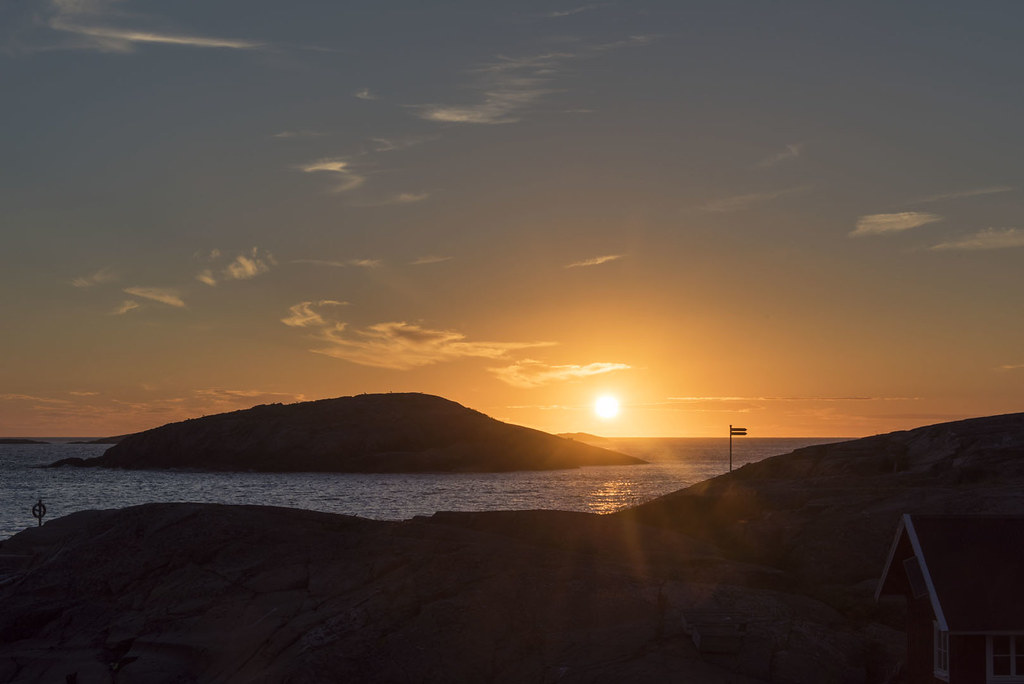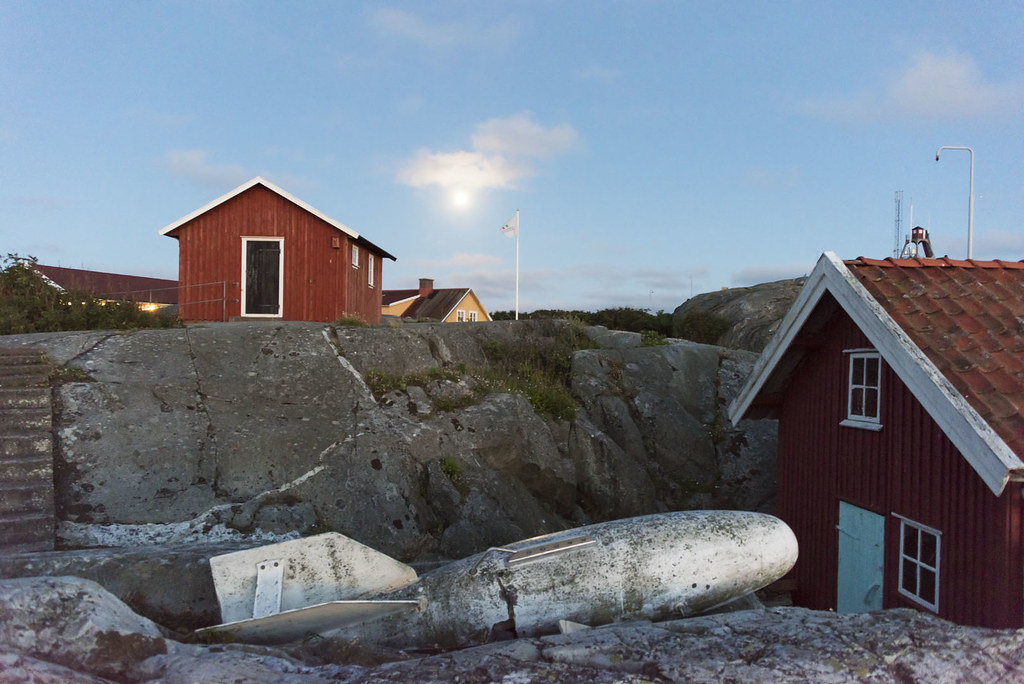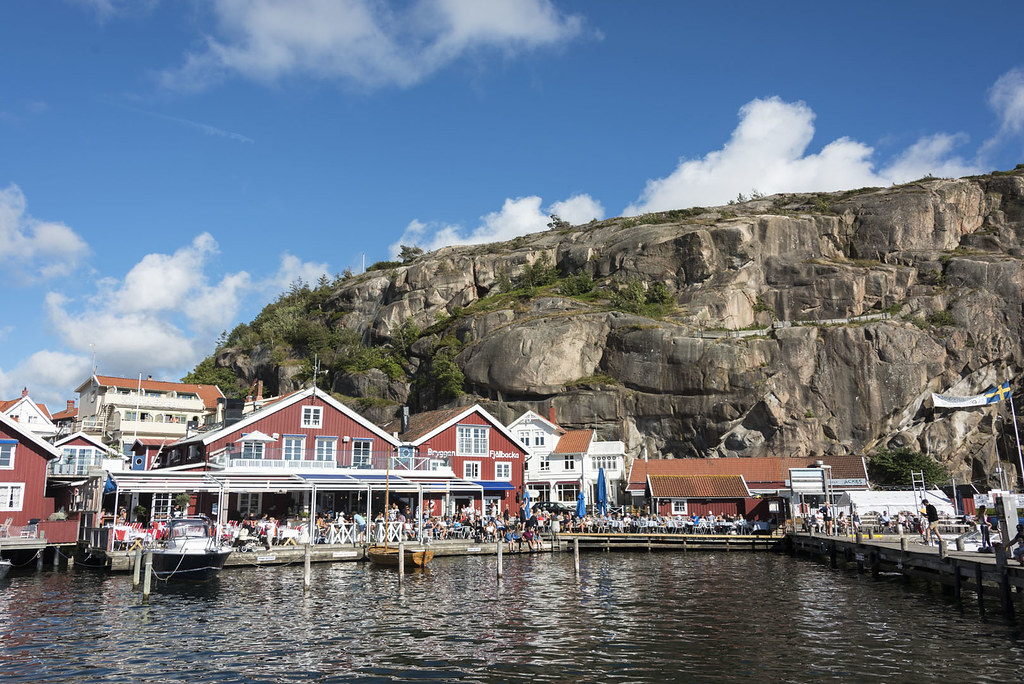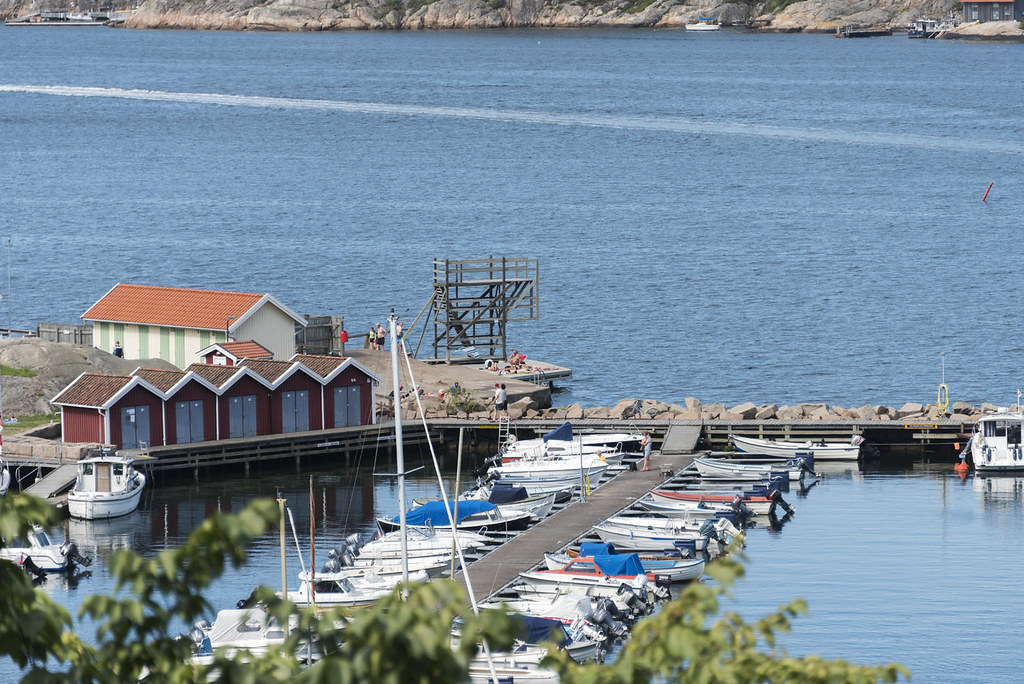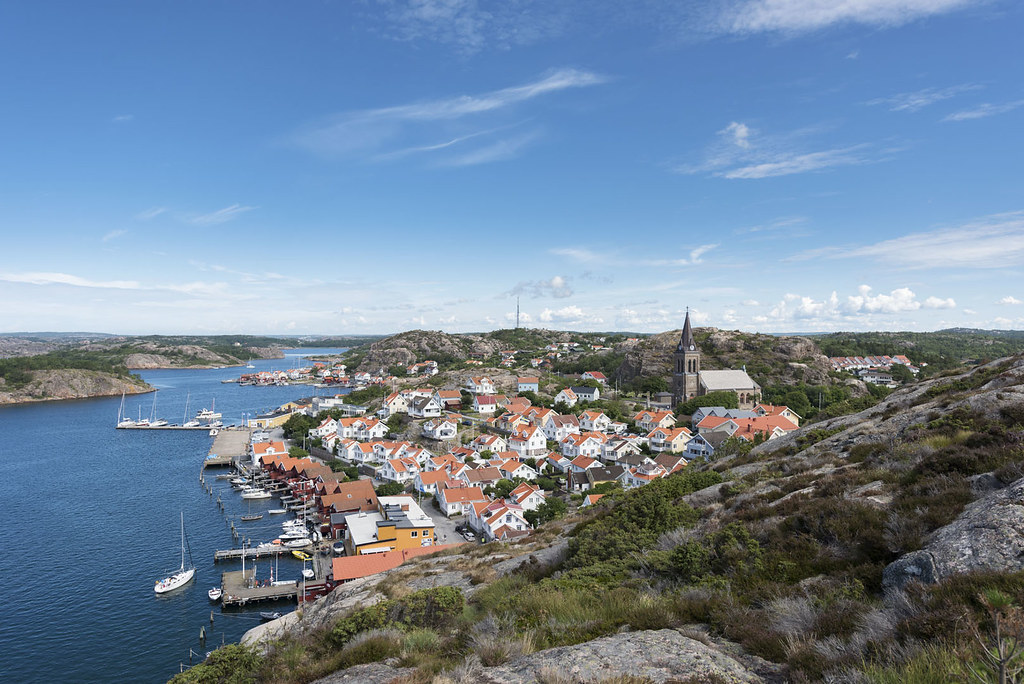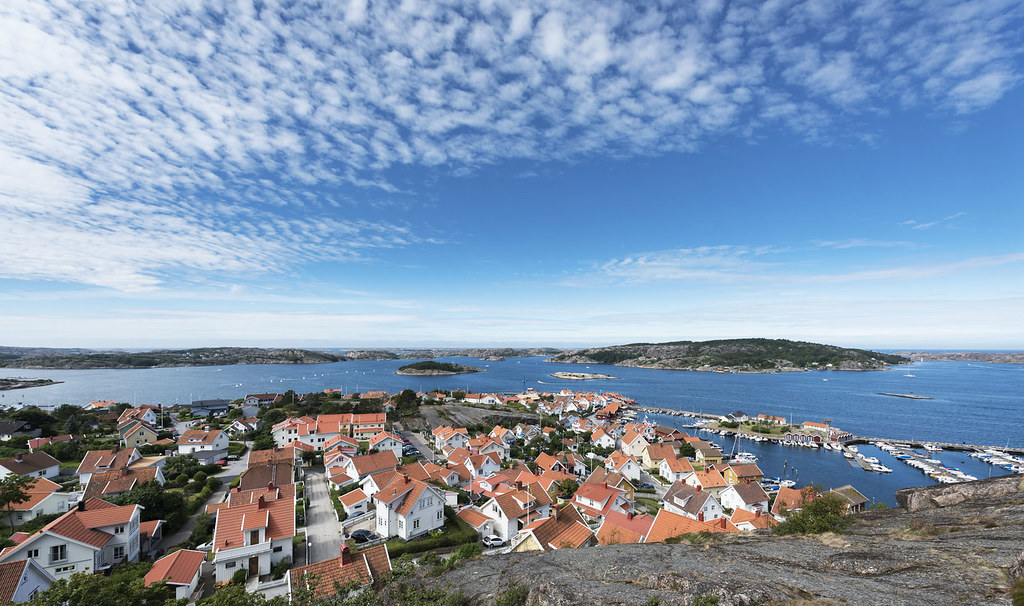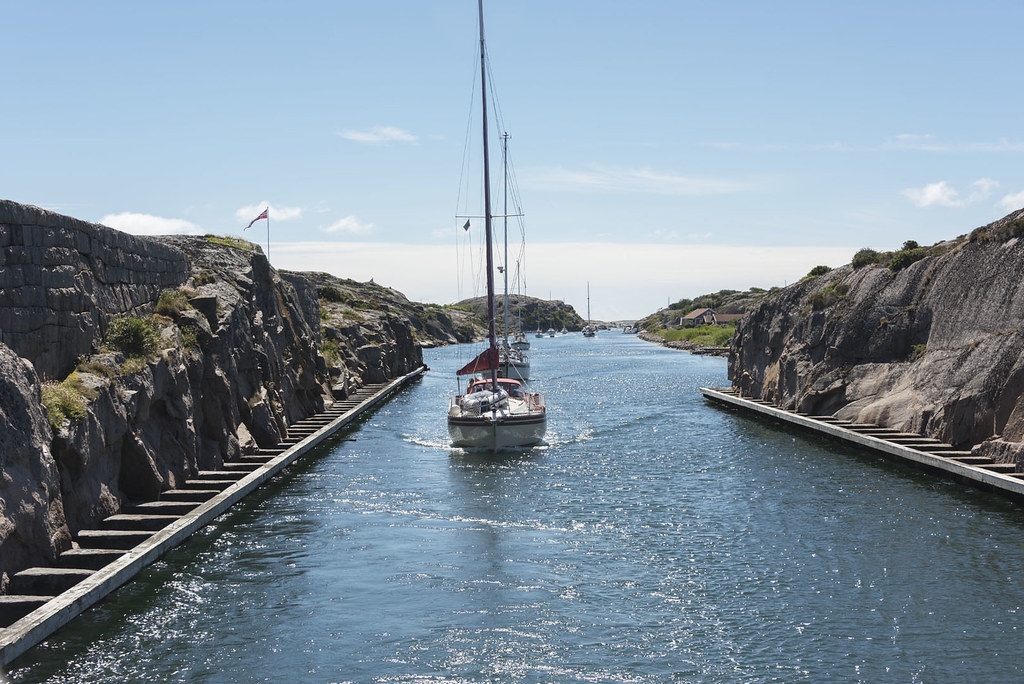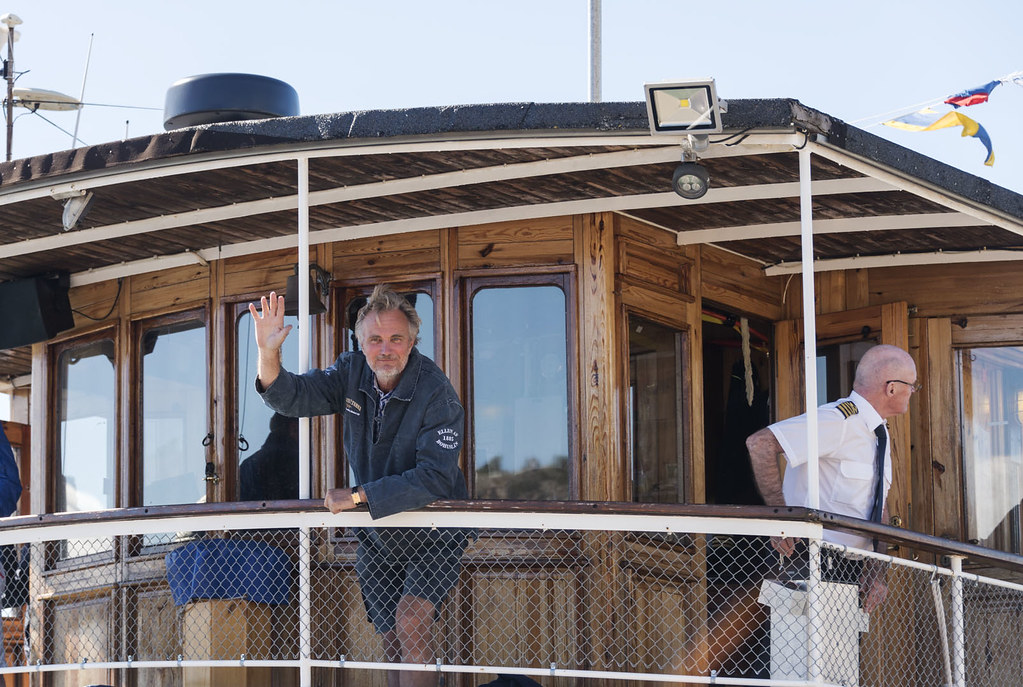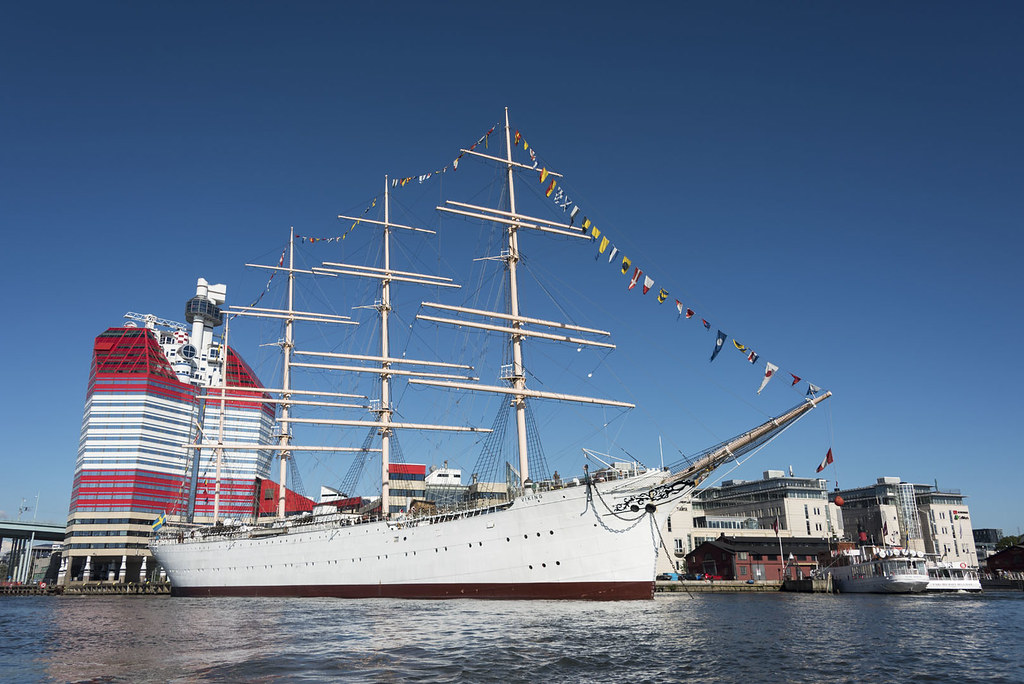After exploring green Stockholm and sharing with you some unusual things to do in Stockholm, we continue our tour of the country with a 3 day West Coast Sweden itinerary, from Gothenburg to Fjällbacka, with lots of cool places in between.
Deep blue sky. Waves, wind, and a sea that is mysterious and beckoning at the same time. Rocky islands, buffered by the wind, on the edge of a map. Flaming sunsets, nights that have no end. Fishermen villages with wooden houses painted in bright, vivid colours. Some of the best seafood you’ll ever taste. This was the Swedish West Coast for us. Wild, welcoming and impossibly beautiful.
The West Coast of Sweden is the kind of place where you can explore the magic of Northern summers in its colourful, sunny and radiant best. A place that makes you want to grab life with both hands, run into the sunset, splash into the sea, and never go to sleep – because there’s never enough time to experience it all, and you don’t want to miss a single second of that beauty.
After 6 weeks hiking in Finland, we wanted some bold nature. In Finland, nature whispers – it whispered to us in the still lakes of Nuuksio, in the tall trees of Sipoonkorpi, in the sunsets of Lohja. We wanted nature to scream, to hit us with full force, with colours, sounds, smells, people. We had enough of silence, we wanted life.
We found all that – and more – during our 3 days on the Swedish West Coast.
Here’s our itinerary, including some of the best things to do on the West Coast of Sweden, from Gothenburg to Fjällbacka.
Day 1 – Gothenburg & Marstrand
Gothenburg – the ‘Hipster City’
If you’re going to travel the West Coast of Sweden, you’re bound to be going through Gothenburg sooner or later. If you’re in search of nature, you may be tempted to skip the city and head straight to the coast – but believe us, Gothenburg is a really pleasant place for a wander, especially if it’s a sunny day.
Sweden’s second city may not have the elegant skyline and stunning location of Stockholm, but it’s full of interesting places with a palpable hipster vibe – think artisan coffee shops, juice bars and microbreweries.
If you only have a few hours to while away in Gothenburg, we recommend wandering around Haga, one of the oldest neighbourhoods in Gothenburg. A banner slung across the main street, Haga Nygata, proudly states ‘Haga – Shopping and Fika Since 1634’, when the neighbourhood was built. Haga buildings now house restaurants, independent stores and coffee shops.
As the banner suggests, you can’t miss Fika while in Haga – coffee is usually excellent quality, and you MUST try Haga’s very own specialty, pizza-sized cinnamon buns.
Another location to enjoy hipster Gothenburg is Tredje Långgatan, very close to Haga, very lively in the evening and full of excellent bars and restaurants. We loved Tacos & Tequila for Mexican and Brewers Beer Bar for sourdough pizza and craft brews (lilac ale anyone?)
If you’re only stopping in Gothenburg for a quick coffee or a bite, head over to Magasingatan, a pedestrian street in the city centre with yet more coffee and independent designer shops. A good choice for a coffee break is Da Matteo Torrefazione, with a sunny courtyard terrace, home-roasted coffee and lots of goodies baked in house.
For a quick bite that won’t break the bank, try Gothenburg’s very own street food – a ‘Half Special’, a hot dog topped with mashed potatoes. Gourmet Korv not far from Magasingatan have a great half special, made with gourmet butcher sausages, while the Clarion Post Hotel just opposite the train station offer a ‘sit-down’ version of the half special in their terrace bar.
Marstrand – Where Gothenburg locals get their Vitamin Sea
Marstrand is one of the seaside towns closest to Gothenburg, a mere 45 minutes drive away – but the two places couldn’t be more different. Gothenburg is indeed pleasant enough, for a city of half a million people. Marstrand is a popular seaside location, but it retains a quiet feel, and even in the height of summer you won’t have to share the streets with packs of holiday-making Swedes.
We reached Marstrand in the early evening. The sun was shimmering on the deep-blue waters of the North Sea, and a warm breeze made blue and yellow flags wave from the flag posts in many gardens.
Many of Marstrand’s sights are not located in the town, but on Marstrand Island, only a 5 minute ferry ride away. Architecture and art lovers shouldn’t miss the Strandverket Art Museum, located in an old fort and offering an eclectic collection that focuses on sculpture and photography – we had the chance to see Lars Tunbjörk‘s photo exhibition of everyday life in Sweden and Eva Hild’s magical large scale abstract sculptures.
There’s also a permanent sculpture park located outside the fort – right outside the gates, right opposite the sea, we saw a large bronze statue depicting a boy, hunched under the weight of his backpack. An image that is meant to signify the plight of refugees worldwide.
Marstrand houses the annual Match Cup Sweden sailing competition, making it a popular destination for sailboat lovers – when we visited, the guest harbour was packed to the brim. It was probably a touch too cold for swimming, but the rocks near the water were packed with children brandishing plastic buckets, a piece of string and a clothes peg. Crab fishing is a favourite hobby, and after having seen how full many buckets were, I can see why!
The abundance of sailing stores, beautiful wooden villas and boats gave Marstrand an exclusive Saint Tropez-esque feel, the favourite summer abode for Gothenburg’s bold and beautiful. Yet, people on the streets seemed to come from all walks of life. in Sweden, sailing is for everyone – most people we met seemed to own a boat and knew how to sail.
The West Coast of Sweden, and Marstrand in particular, is also worth a mention for its great cuisine – fresh, locally-caught fish and seafood is found in all restaurants, offering a respite from the meatball and mashed potato combo that dominates menus in the rest of the country.
We recommend dinner at the Marstrand Grand Hotel, where we enjoyed a crayfish gratin with TONS of butter (I still dream about it sometimes) and blackened cod. After 6 weeks (and tons of salmon) in Finland, North Sea cod was a welcome change.
Day 2 – Smögen & the Weather Islands
Smögen – The Cutest Fishermen Village
First things first – Smögen is a bit touristy, but it’s lovely. Instagram-pretty kind of lovely, with fishermen boats and a wooden boardwalk on the edge of the water. Rows of wooden houses – some blue, some yellow, many red – complete the picture, surrounded by rust-coloured rocks, deep-blue sea and a perfect sky.
I guess that out of season Smögen would feel like an out-of-time village, with fishermen unloading the daily catch in the salt-laden alleyways of the village, and the sharp North Sea wind blowing sharp, drawing foamy wavelets on the shore. In summer, the atmosphere around Smögen was almost Mediterranean – the boardwalk was full of cafés with outdoor seating, stores selling colourful bikinis, and a variety of plastic toys including ‘crab-catching’ pegs.
The boardwalk is about one kilometre long from the car park to the edge of the village, where you’ll be able to get your Instagram shot with the wooden houses I mentioned before. Afterwards, make sure you stop off for lunch at one of the boardwalk cafes before heading off – Smögen is famous for its open sandwiches with hand-peeled shrimps, just what you need before continuing your exploration of the Swedish West Coast.
The Weather Islands
The Weather Islands – Väderöarna in Swedish – are the westernmost island group in Sweden – ‘beyond, there’s just England’, as our guide and host Pia said. They’re a place of rough, rocky, windswept beauty – a place where you’ll feel like a castaway on the edge of the world, with nothing but the wind, sea and everlasting ‘nights without night’ to keep you company.
The gateway to the Weather Islands is Fjällbacka, a popular seaside village, that deserves at least a half-day visit. There’s only one guesthouse in the Weather Islands, and they organise transfers to and from Fjällbacka – if you’re planning to stay overnight (something we highly recommend), get in touch with Pia, the guesthouse owner, and ask her for the latest boat timetable.
The Weather Islands used to be inhabited by sea pilots and their families, who were stationed on these islands to guide incoming boats through the treacherous, rocky coast. However, local legends said that some pilots made ships wreck on purpose, so they could steal and smuggle their loot. Nowadays, the pilot tower lookout is the only surviving sight of the sea pilot era – don’t miss climbing to the very top for a great view over the islands, even though the ladder is super steep and narrow!
The Weather Island guesthouse organises a variety of activities, including sea kayaking, lobster fishing and wildlife tours to nearby sea colonies, but if you ask us, the best thing to do is just enjoy being in the Weather Islands. It’s easy to explore independently – there’s a 3 km trail snaking across the main island, where the guesthouse is situated.
We walked it at sunset, when the wind was no longer blowing and a flaming sunset blazed across the sky, before fading into a blue haze that lasted until sunrise, when the first sparkle made the sea shimmer once again.
Day 3 – Fjällbacka
Besides Gothenburg, the only place on the West Coast of Sweden I had heard of before was Fjällbacka, famous for being close to Ingrid Bergman’s summer home and for being the location of Camilla Läckberg’s crime books. Ingrid Bergman is my favourite actress – I grew up watching her in Casablanca, Hitchcock’s and Rossellini’s movies – and I couldn’t wait to visit Fjällbacka, to finally see for real the village where she spent her summer holidays for over 20 years.
Ingrid’s house is located on the island of Dannholmen, that we briefly passed on our way to the Weather Islands. It’s not possible to visit the actual island, as Ingrid’s family still spends time there in summer. However, Ingrid fans will be happy to know that the village continues to celebrate the actress, 35 years after her death. Fjällbacka’s main square is called Ingrid Bergman Torg, and a few steps away on the harbour front there are some signboards with pictures of Ingrid’s life in Fjällbacka, and a sculpture of the actress looking out towards Dannholmen.
The writer Camilla Läckberg was born and bred in Fjällbacka, and in her books she often weaves actual locations and characters from the village – like whimsical Hotel Bryggan, with themed rooms that follow the journeys of a local captain, and the Falck family, the richest in the village, that made its wealth during the ‘herring time’ in the 19th century.
If you’d like to find out more about Fjällbacka, its people and stories, you can arrange a guided walk with the tourist information office. Alternatively, the village is quite compact so it’s easy to explore on your own – some of the houses bear plaques with stories about former residents, like ‘shoe John’, who made a pair of clogs for Alfred Hitchcock.
Before leaving Fjällbacka and heading back to Gothenburg, take some time to climb to the top of ‘Fjällbacka mountain’, the big rock just behind the harbour. The village is actually named after the mountain – Fjällbacka means ‘mountain-hill’, a strange moniker for a seafaring place. The climb to the top of the rock is spectacular – stairs and a path run through a crack, with four large boulders balancing on top of it since Ice Age times.
From the top, you’ll see Fjällbacka and its archipelago all around you – the perfect view to say goodbye to the West Swedish Coast.
Practical West Coast Sweden Information
How to Get Around the Swedish West Coast
-
- The most straightforward way is hiring a car. Driving between one town and another is fairly quick, and there are convenient car parks located outside the villages mentioned in this post, usually a short walk to the centre. Some hotels also offer car parks.
- If you’re after a touch of adventure and an unusual experience, you can opt for a three day cruise from Gothenburg to Strömstad on the Swedish-Norwegian border, passing many of the sights mentioned in this article. We hopped on the cruise between Smögen and Fjällbacka – three hours cruising past islands and islets, through narrow canals and past beaches where locals enjoyed their summer holidays. Despite being a ‘cruise’, accommodation in not on board the ship, but in boutique hotels.
Where to Stay on the West Coast of Sweden
Here’s a list of some recommended hotels in the locations we mentioned in this article – we stayed in some, and others we just visited and liked.
- Gothenburg: Clarion Post Hotel – an artsy boutique hotel in the former post office.
- Marstrand: Marstrand Havshotell – located on the shore, with a salty spa and a great breakfast.
- Fjällbacka: Hotel Bryggan – we just NEED to get back to stay in the themed rooms.
- Weather Islands: Väderöarnas Värdshus – the only guesthouse, with an excellent restaurant.
Any other tips or questions about the Swedish West Coast? Let us know in the comments!
We would like to thank Visit West Sweden for having hosted us on this post-TBEX trip. All opinions are our own.
Pin it for later?
